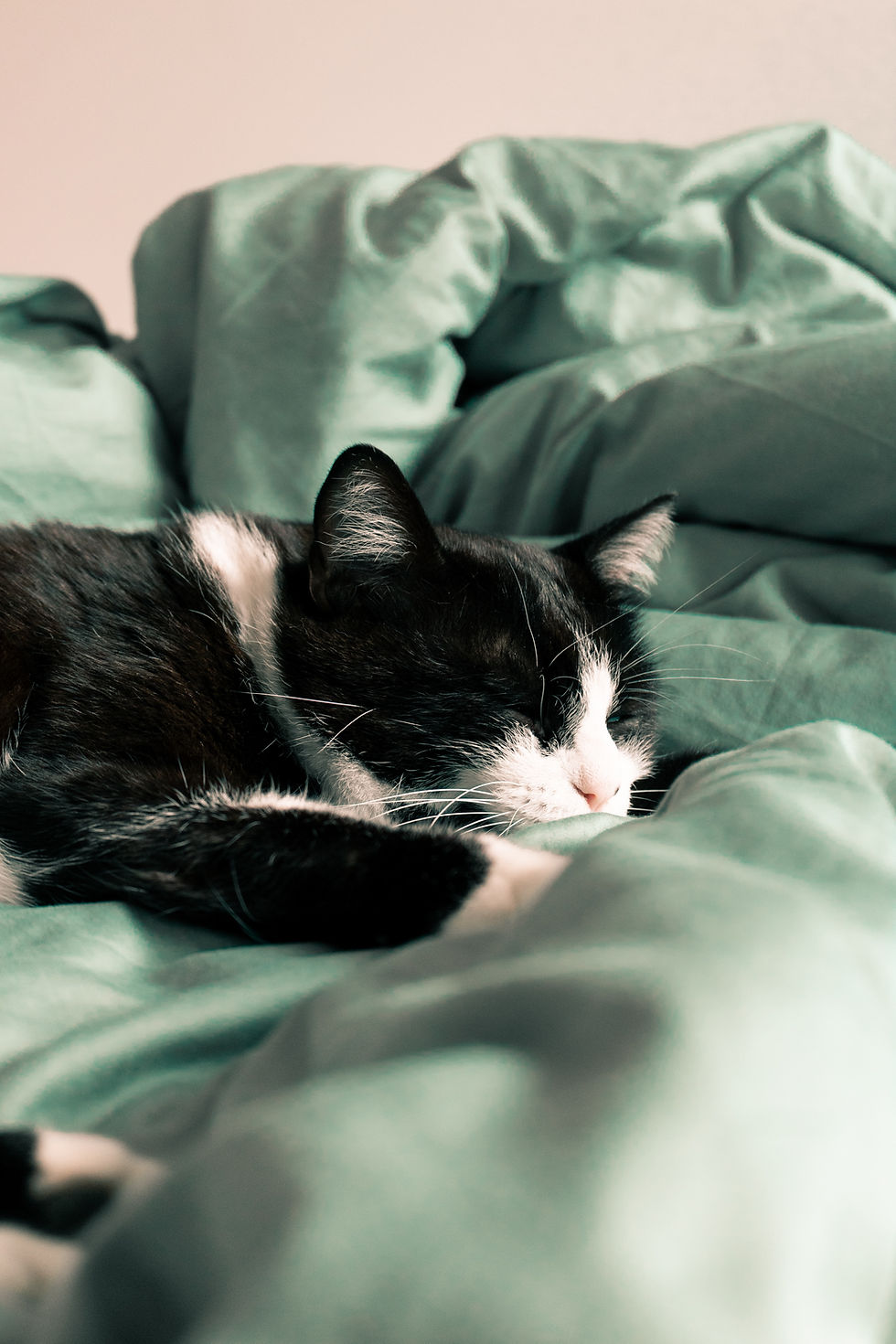Think your kitty is purr-fect?
- morgan6646
- Jul 11, 2021
- 3 min read
Updated: Dec 1, 2021
As any cat-owner knows, there’s no sweeter sound than that of your kitty purring - but what actually causes it, and what else can it mean?

What is a purr?
As the muscles on your cat’s larynx move, they constrict the vocal cords, resulting in air vibrations called purrs. As your cat breathes, the air touches the vibrating muscles, and this is what produces the purring sound. The consistent pattern and frequency of your cat’s vibrations range from 20 Hz to 150 Hz, during both inhalation and exhalation.
The frequency of these vibrations are said to promote bone growth and maintenance in felines. Typically, an average cat can spend 16-20 hours of every single day, fast asleep and snoozing away. You might assume your cat’s purring while asleep is a sign of contentment, but in reality it’s quite often a form of self-repair. The vibrations are a surefire way to keep its bones and tissue in good condition as it is resting, thus preventing them from becoming weak or brittle.
Scientifically, the frequencies at which your cat purrs “correspond with established healing frequencies and therapeutic medicine for humans.” The vibrations are known to lower our stress and blood pressure levels, help us sleep better and even help stimulate the healing of infections and swelling, as well as our bones, soft tissue, ligaments and muscles, should any injury have occurred. Frequencies of 25-50 Hz are optimal for promoting bone strength, so scientists have concluded that the whole-body vibrations of 35-50 Hz that occur when cats purr are especially beneficial to us. Purrs release endorphins - both for cats and for us!

Why else might a cat be purring?
Generally, we associate a cat's purring with happiness, like when you’re petting it. But sometimes your cat will purr even when you’re not around. For example, your cat may purr to remind you that it's mealtime. When your cat purrs for food, it combines the purr with an unpleasant meow, something similar to a baby’s cry. Studies show that in this instance, the frequency of purring shoots up to 220 Hz. This is why experts believe that cat owners are more likely to respond to this sound, and listen to their kitty. After all, it’s always dinnertime somewhere!
Purring, much like kneading, is also a self-comforting behavior. This type of purr is sometimes referred to as solicitation purr. Taught and learned from a very young age, kittens start purring to their mother when they are only a few days old; an indication to the mother that it is time to feed her kittens. The kittens can feel their mother’s purr’s vibrations and become calmed and soothed. This habit continues into their adult lives, very similar to kneading.
So cats do have different types of purrs. If you’re ever unsure which kind of purr your cat is currently exhibiting, just check their body language. We’re sure you know your kitty better than anyone, and that in time you’ll figure out exactly what each of their different purrs mean.

Celebrate your dif-fur-ences!
Just like us and our voices, no two cats are the same - and so neither are their purrs! Some cats purr so loudly and deeply that they drown out the sound of your TV, and others will rarely purr, and so quietly that you can hardly hear it. Some cats have a high-pitched purr, while others will just purr in a low rumble. There’s no rhyme or reason to it, and your cat’s purr may match their personality, or might seem the complete opposite!
We hope this blog post has been helpful to you all, and that you’ve gained some insight into the mind of your gorgeous kitty-cat.



Comments